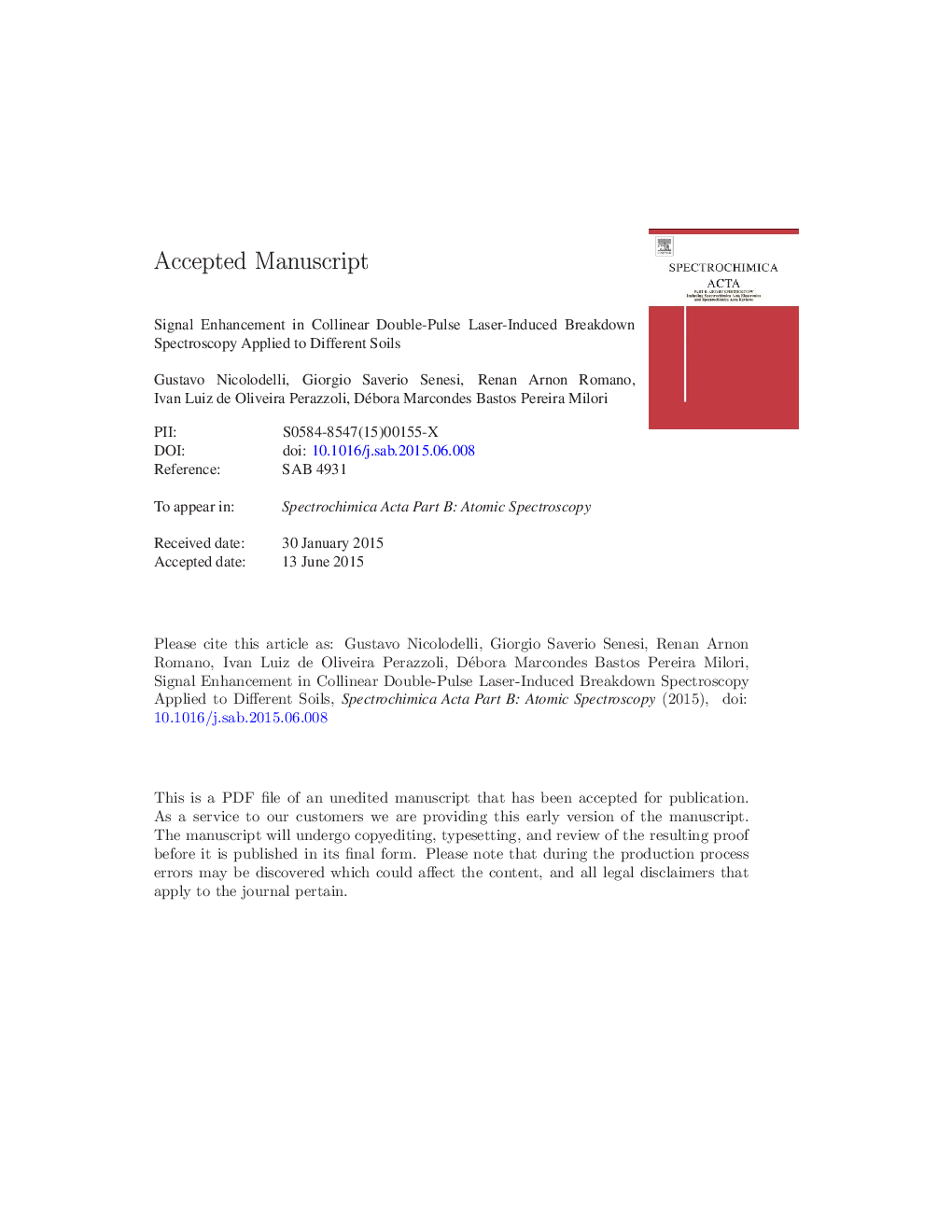| Article ID | Journal | Published Year | Pages | File Type |
|---|---|---|---|---|
| 7674189 | Spectrochimica Acta Part B: Atomic Spectroscopy | 2015 | 25 Pages |
Abstract
Laser-induced breakdown spectroscopy (LIBS) is a well-known consolidated analytical technique employed successfully for the qualitative and quantitative analysis of solid, liquid, gaseous and aerosol samples of very different nature and origin. Several techniques, such as dual-pulse excitation setup, have been used in order to improve LIBS's sensitivity. The purpose of this paper was to optimize the key parameters as excitation wavelength, delay time and interpulse, that influence the double pulse (DP) LIBS technique in the collinear beam geometry when applied to the analysis at atmospheric air pressure of soil samples of different origin and texture from extreme regions of Brazil. Additionally, a comparative study between conventional single pulse (SP) LIBS and DP LIBS was performed. An optimization of DP LIBS system, choosing the correct delay time between the two pulses, was performed allowing its use for different soil types and the use of different emission lines. In general, the collinear DP LIBS system improved the analytical performances of the technique by enhancing the intensity of emission lines of some elements up to about 5 times, when compared with conventional SP-LIBS, and reduced the continuum emission. Further, the IR laser provided the best performance in re-heating the plasma.
Keywords
Related Topics
Physical Sciences and Engineering
Chemistry
Analytical Chemistry
Authors
Gustavo Nicolodelli, Giorgio Saverio Senesi, Renan Arnon Romano, Ivan Luiz de Oliveira Perazzoli, Débora Marcondes Bastos Pereira Milori,
